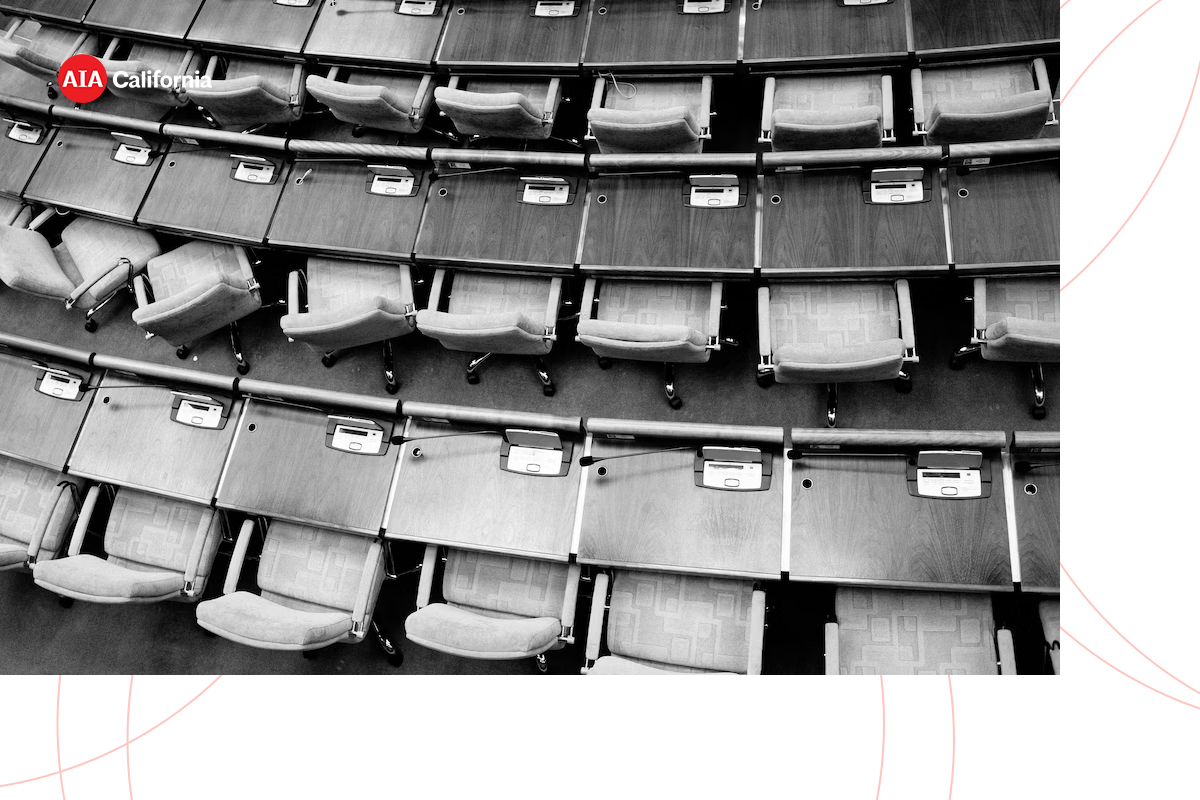
(Original Post Date March 21, 2023) AIA CA has two major code development projects in the pipeline for the upcoming midcycle.
California Existing Building Code (CEBC)
First, the California Existing Building Code (CEBC) will be proposed for a major update, with the addition of seven ‘missing chapters’. The State Fire Marshall is currently proposing adoption, as the conclusion to a very long process of hearings and workshops that involved many stakeholders. These seven chapters will bring for the first time the ‘work area’ method to California as an option for design professionals to consider.
In addition the Performance chapter will be once again published so that it can be optionally used to support Alternate Means and Methods requests. This chapter was previously published (not adopted) as an appendix in the CBEC; so at one time, it was widely available as a reference and resource. Bringing it back will bring back the only code framework that outlines how different life-safety issues can be compared on a numerical scoring basis, which can be helpful when considering alternative methods for code compliance. We believe an expanded CEBC has no downside for design professionals, as the choice of method is up to the design professional so those most comfortable with the existing prescriptive chapter do not need to make any changes.
While there will be something of a learning curve to take full advantage of the new chapters by code officials and interested design professionals, AIA CA is already working with the International Code Council (ICC), and subject-matter experts, to have that ‘ready to go’. In fact, some introductory training has already been developed, presented, and recorded. AIA CA envisions significant ‘real world’ benefits of this code change in supporting reuse and retrofitting of existing buildings, particularly for conversion of obsolete commercial structures to new and innovative forms of housing.
CALGreen
For CALGreen, we are expecting to see a significant set of changes come forward for adoption by California Building Standards Commission (CBSC) and the Division of State Architect (DSA) of the first integration of embodied carbon considerations into CALGreen. Embodied carbon is very important for near-term climate action as Greenhouse Gas impacts (aka carbon) occur all at once when projects are constructed. Studies have documented that even high-performing new buildings can take years to decades to recoup these initial impacts via operational carbon savings.
The proposed measure will apply only to large projects (those over 100,000 sq ft commercial; 50,000 sq ft for school projects subject to DSA). These numbers are ‘sweet spots’ where benefits are significant while impacting a modest number of actual projects.
The proposal includes a number of optional compliance paths for design professionals to choose from. These range from simple prescriptive approaches using material data, or a performance approach that uses Whole Building Lifecycle Assessment (WBLCA).
There is also a path based on reuse and retrofit of an existing building. AIA CA believes it is important to include these provisions in this code cycle to shift building industry culture and habit toward early consideration of carbon impacts. Limiting these provisions to a small number of large projects will at the same time avoid slowing down economic activity or reducing project feasibility. There may be some lively discussions during the final hearings on these changes just as there were during the Code Advisory Committee hearings where it was ultimately approved. AIA CA believes this journey must start now, and that this measure is well-researched, well considered, and in the best interest of our state.
Both of these efforts are the result of a long runway of effort and extensive collaborations, and AIA CA has worked with a very wide range of subject-matter experts and stakeholders in the code development process itself.
Do you have questions or thoughts? Share them with Mike at mfm@appliedarts.net